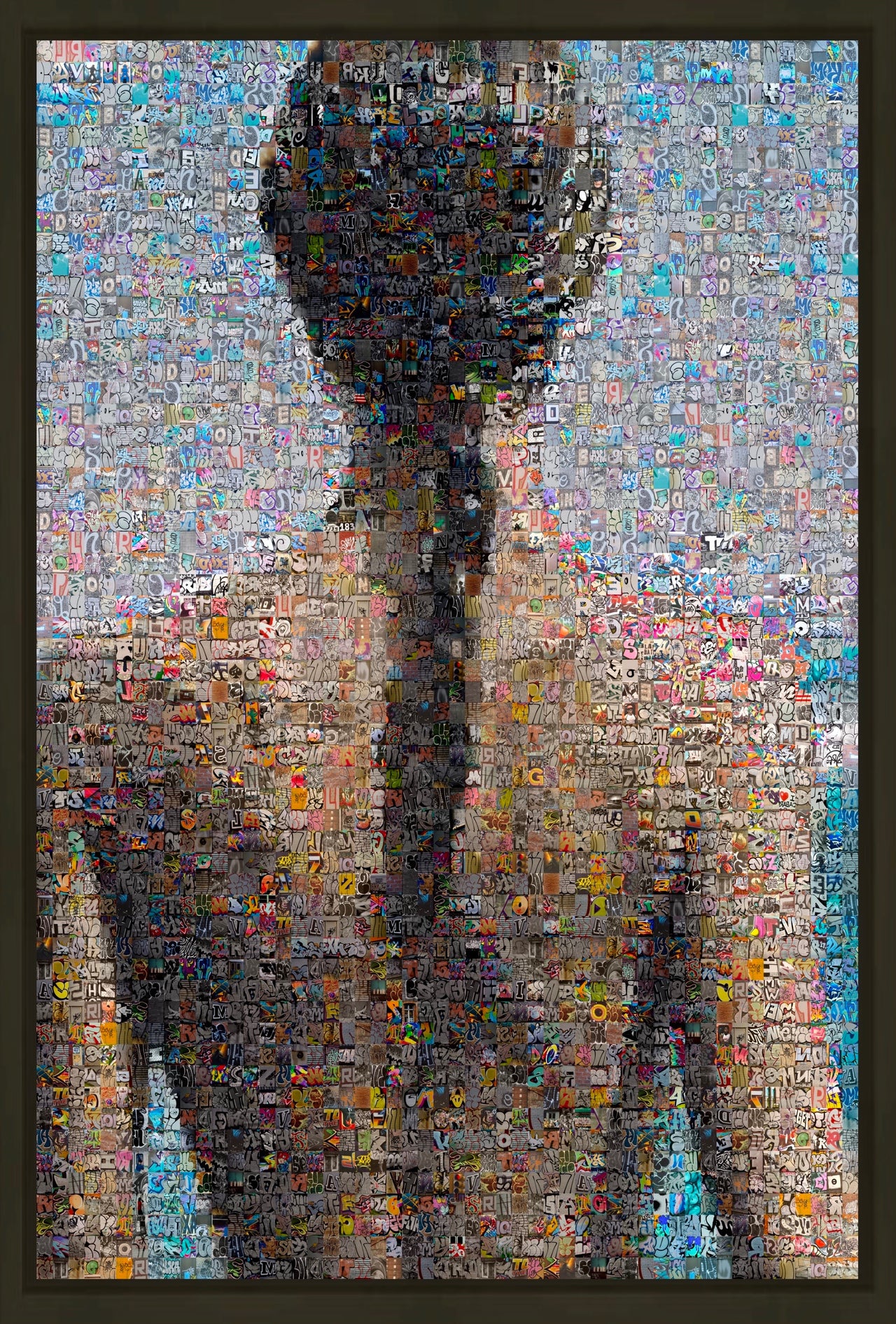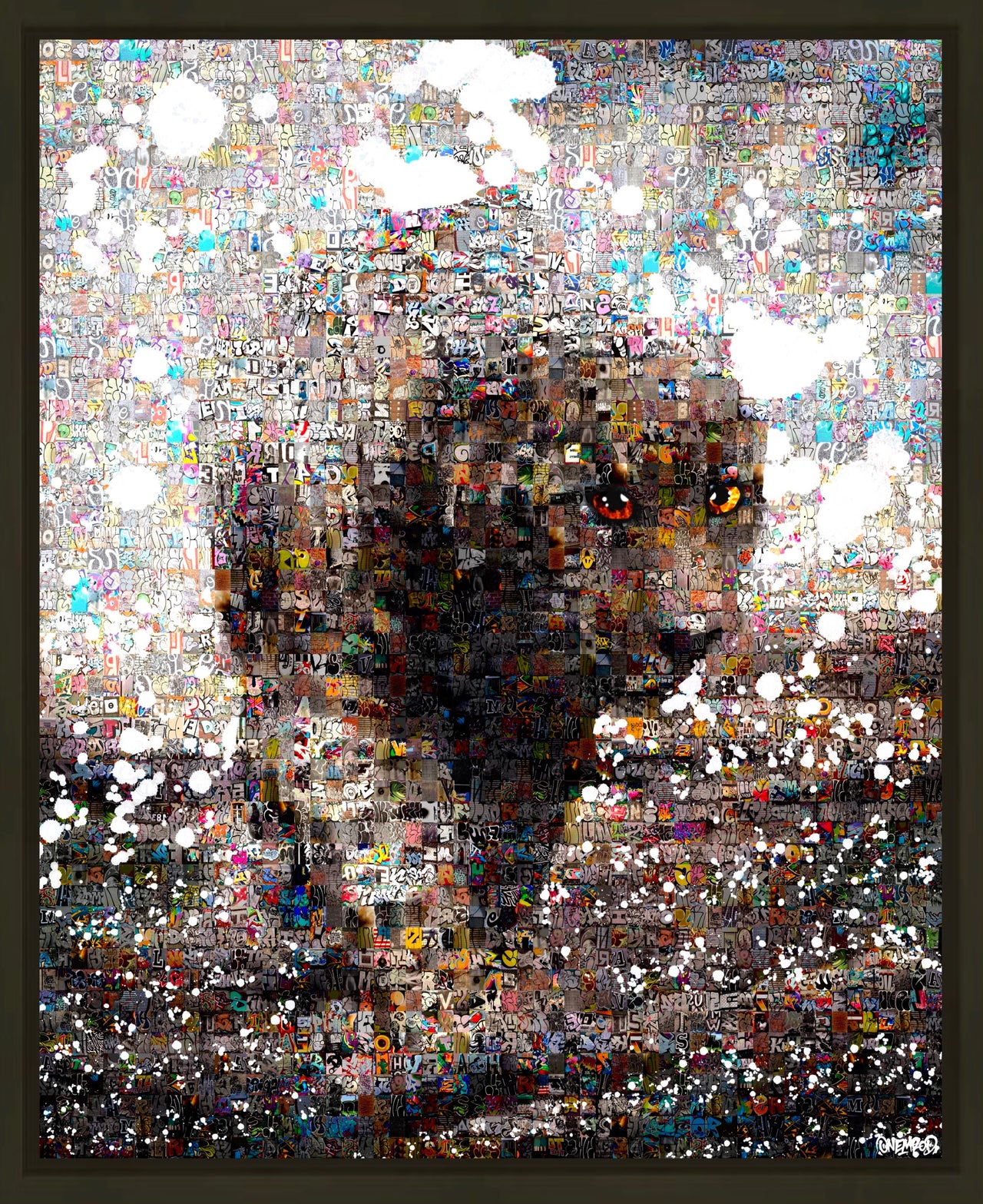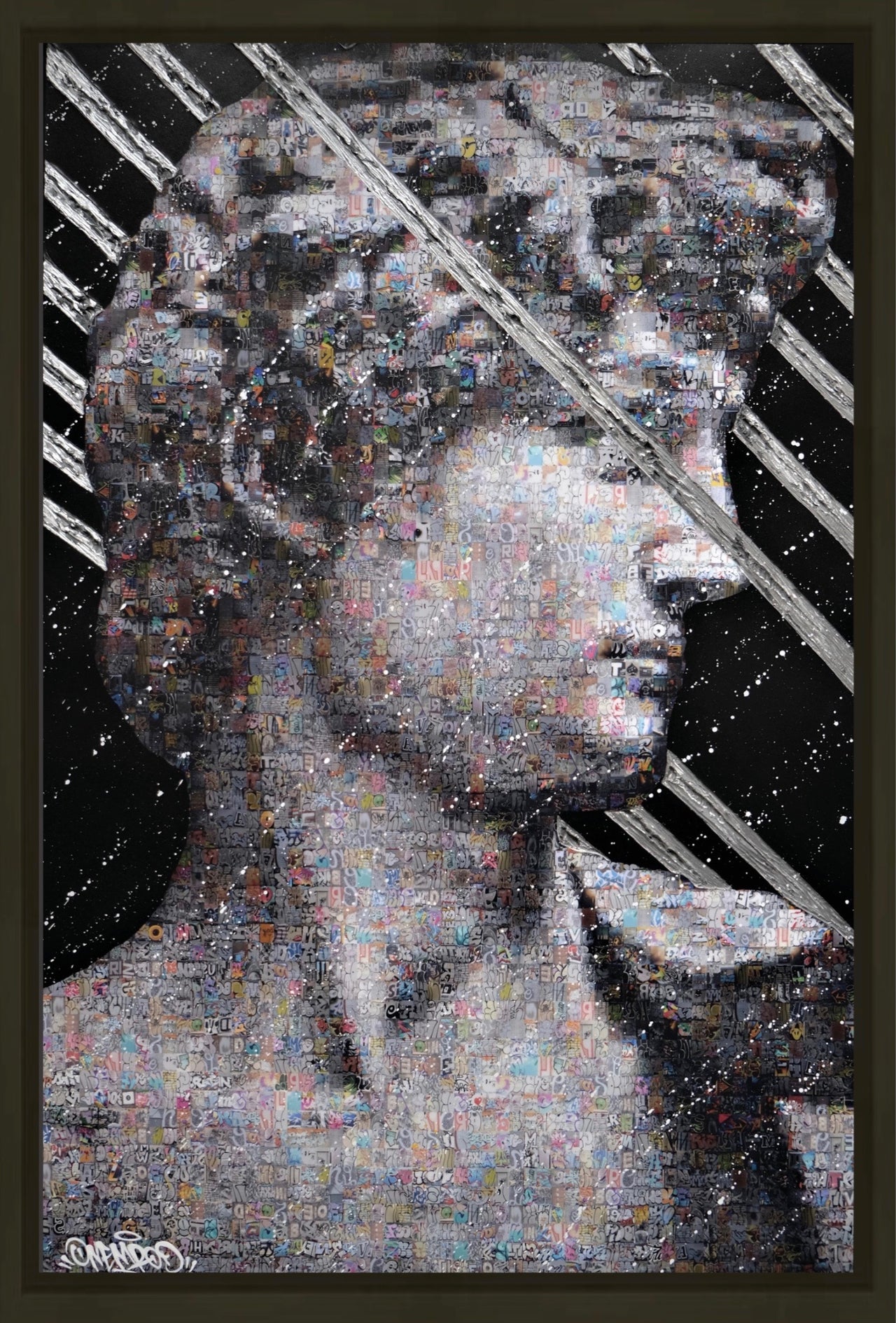EMROD
EMROD ONE is a French artist born in 1985. He discovered art in the neighborhoods of Paris and its suburbs. He then immersed himself in the world of graffiti, forming his urban artistic culture through adventures and encounters. The ephemeral nature of this art motivated him to begin a quest that would prove to be the basis of his future work: immortalizing graffiti through photography. He developed his technique as an autodidact and chose to highlight the essence of graffiti: the Letter.
His work thus reveals the contrasts of a life and a society on which the artist questions himself and takes a position. His reflection is an invitation to take a step back from the themes explored.
Artistic and technical approach
Beyond the message conveyed by words, graffiti is an identity mark. The style of a "writer" is defined by his letters. This is the very essence of the graffiti artist, the letter then becomes his message. His work is a modern calligraphy. The letters free themselves from constraints and classic standards, to deconstruct themselves infinitely and offer a spectacle limited only by the imagination of its author.
Wildstyle is a style of graffiti in which letters are intertwined, merged and extravagant. Their ends are dynamic and can turn into arrows or spikes. The letters are re-imagined; it becomes difficult to decipher a wildstyle to a new eye.
Conversely, the "bubble" (also called "flop" or "throw-up") simplifies the letters to the extreme, keeping only the movement. This circular style with tapered ends is done quickly, often in a few seconds. The impact of a flop lies in the pattern it forms with the letters.
With the creations of Emrod One you have the opportunity to enter the world of a graffiti artist. Seemingly cryptic, it takes the form of mosaics to reveal a message, an aesthetic of street art.
EMROD ONE presents the maturation of his work: digital art at the service of optical art (Op Art). To express his calligraphic obsession, he applies his talent, composing images following a photomosaic technique, assembling thousands of photographs of the graffiti he has encountered.
With aluminum as a support, he works the letters in different shapes and textures, assembling impressive creations. Depending on the versions, a digital painting work is then carried out, reinforcing the character of each work.
His works find their value in taking a step back, to create movement in space, they invite us to be analyzed closely and contemplated from afar.

 Take me back$1,650.00 USD$1,650.00 USDUnit price / per
Take me back$1,650.00 USD$1,650.00 USDUnit price / per Leopard spirit$1,650.00 USD$1,650.00 USDUnit price / per
Leopard spirit$1,650.00 USD$1,650.00 USDUnit price / per David$1,650.00 USD$1,650.00 USDUnit price / per
David$1,650.00 USD$1,650.00 USDUnit price / per



